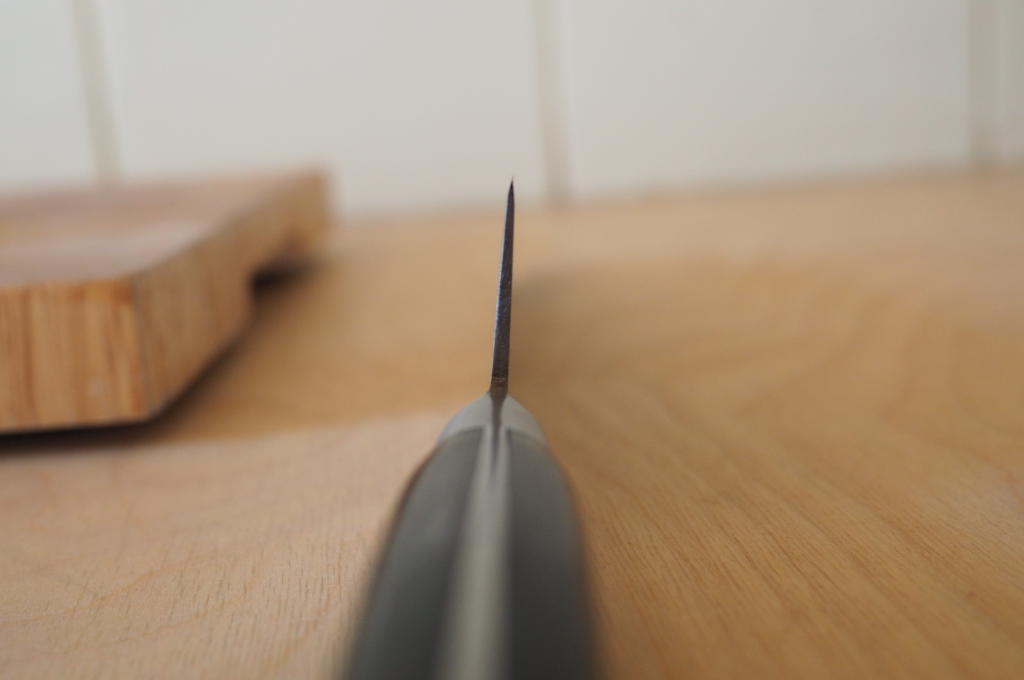Hello,
another beginners question from my side as I want to make my knifes to be they way I like them.
I have a nice Masamoto Gyuto which I bought at the Tsukiji fishmarket in Tokyo, which was really a nice shopping experience btw.
I like the knife a lot for it's feel in the hand and the shape of the blade. Unfortunately cutting with the knife is always a little bit hard, I guess because the profile is not really that much thinned compared to my other Gyuto, see the picture below.

I am not sure if I should try to thin it by myself as I only have limited experience with thinning (only once with my Zakuri which had the angle "build in") and on the other side the V1 steel of the Masamoto should be quite hard.
- Any advice/tipps on this if I wanna try it by myself? I've watched the video about thinning from Japanese Knife Imports which explains the basics pretty well. Available stones are a 400 Naniwa professional, a big green "noname" 1000 ceramic stone I bought in Tokyo and a 3000/8000 naniwa combi superstone. Also a 1000/4000 combi stone from japan-messer-shop.de is available.
- If it is better to send it to a professional sharpener: can you recommend someone within Europe? I found only JNS at the moment, but the website says that he does not do sharpening at the moment because of travel activities.
Greetings
Stefan
another beginners question from my side as I want to make my knifes to be they way I like them.
I have a nice Masamoto Gyuto which I bought at the Tsukiji fishmarket in Tokyo, which was really a nice shopping experience btw.
I like the knife a lot for it's feel in the hand and the shape of the blade. Unfortunately cutting with the knife is always a little bit hard, I guess because the profile is not really that much thinned compared to my other Gyuto, see the picture below.

I am not sure if I should try to thin it by myself as I only have limited experience with thinning (only once with my Zakuri which had the angle "build in") and on the other side the V1 steel of the Masamoto should be quite hard.
- Any advice/tipps on this if I wanna try it by myself? I've watched the video about thinning from Japanese Knife Imports which explains the basics pretty well. Available stones are a 400 Naniwa professional, a big green "noname" 1000 ceramic stone I bought in Tokyo and a 3000/8000 naniwa combi superstone. Also a 1000/4000 combi stone from japan-messer-shop.de is available.
- If it is better to send it to a professional sharpener: can you recommend someone within Europe? I found only JNS at the moment, but the website says that he does not do sharpening at the moment because of travel activities.
Greetings
Stefan




